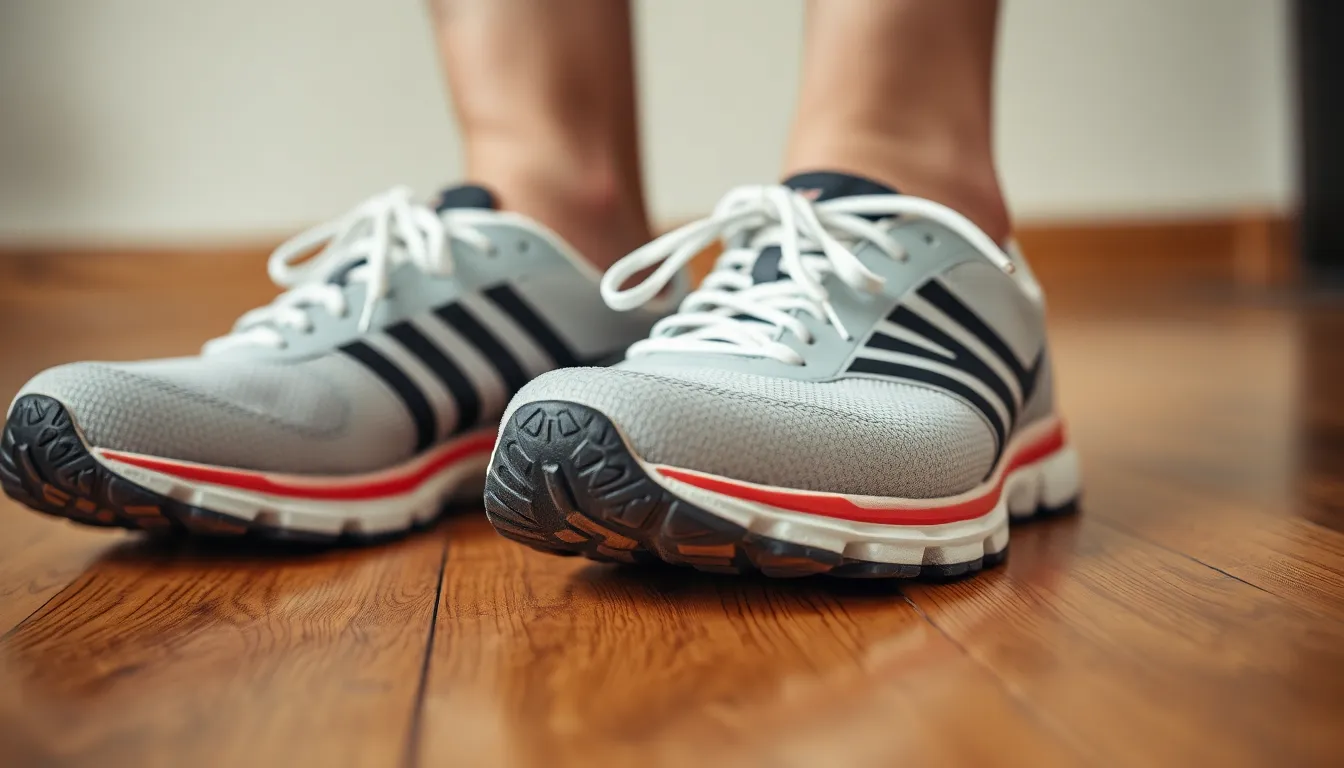Table of Contents
ToggleBlack toenails can be a real buzzkill, turning your favorite open-toed shoes into a no-go zone. Whether it’s from an unfortunate run-in with a coffee table or the aftermath of a vigorous workout, those darkened nails can make anyone feel self-conscious. But fear not—there’s a light at the end of the tunnel, or should we say, a polish at the end of the pedicure!
Understanding Black Toenails
Black toenails often indicate underlying issues that require attention. Various factors contribute to this condition, affecting individuals’ comfort and self-esteem, especially in warmer months when open-toed footwear is common.
Common Causes
Injuries frequently lead to black toenails, resulting from stubbing, dropping heavy objects, or prolonged pressure. Intense physical activities, like running or dance, may also cause bruising beneath the nail. Fungal infections can alter nail color too. Certain health conditions, such as diabetes or circulation problems, pose risks as well. Poor-fitting shoes compress the toes and create trauma. Blood disorders, such as clotting issues, could amplify the problem.
Symptoms to Watch For
Black toenails often present with discoloration beneath the nail that varies in intensity. Pain or tenderness around the affected area may indicate a more serious issue. Swelling could occur, sometimes accompanied by inflammation. If the nail separates from the nail bed, professional assessment becomes essential. Pus or discharge may signal an infection that requires immediate intervention. Changes in nail texture, such as roughness or crumbling, often accompany these symptoms, indicating additional concerns.
Prevention Tips

Preventing black toenails involves choosing the right footwear and maintaining proper foot hygiene. Taking specific measures can significantly reduce the likelihood of developing this condition.
Proper Footwear
Choosing well-fitted shoes remains essential. Shoes should provide ample room for toes without being too loose. Select athletic shoes that accommodate foot movements, especially during physical activities. Cushioning in the shoes offers added protection against impact. High heels can contribute to toenail problems due to pressure, so minimizing their use benefits overall foot health. In addition, athletes should consider using shoes designed specifically for their sport. These specialized options can prevent injuries that lead to discoloration.
Foot Hygiene Practices
Maintaining foot hygiene helps prevent fungal infections, a common cause of black toenails. Washing feet daily with mild soap keeps bacteria and fungi at bay. Drying feet thoroughly, especially between the toes, prevents moisture buildup. Regularly trimming nails straight across minimizes chances of ingrown toenails. Using antifungal powder on feet and inside shoes can reduce excess moisture. Inspecting feet routinely for signs of changes or injuries promotes early detection and treatment of potential issues.
Treatment Options
Several treatment options exist for addressing black toenails, ranging from home remedies to medical treatments. Understanding these choices helps individuals choose the most effective solution.
Home Remedies
Natural methods often assist in treating black toenails. Applying a mixture of vinegar and water to the affected area can promote healing due to the antifungal properties of vinegar. Using tea tree oil, known for its infection-fighting abilities, supports nail health. Soaking feet in warm saltwater helps reduce swelling and pain, offering immediate relief. Keeping nails trimmed prevents further injury. Lastly, maintaining a clean and dry environment discourages fungal growth, reducing the risk of recurrence.
Medical Treatments
When home remedies fall short, medical treatments provide further options. Consulting a healthcare professional is crucial for persistent symptoms. In some cases, antifungal medications treat underlying infections effectively. For severe cases, draining fluid from beneath the nail relieves pressure and alleviates pain. Laser therapy offers an advanced solution for stubborn fungal infections, promoting nail regrowth. Overall, medical interventions address symptoms while preventing complications, encouraging timely healing.
When to See a Doctor
Individuals should seek medical attention for black toenails when they notice symptoms such as persistent pain, significant swelling, or increasing discoloration. Changes in nail texture or shape also warrant professional evaluation. Signs of infection, including pus or a foul odor, indicate a need for immediate care.
Those with underlying health conditions like diabetes or circulation problems must consult a doctor sooner due to their elevated risk of complications. If home remedies fail within a few days, a medical assessment helps determine further treatment.
Pregnant individuals, elderly clients, or those with weakened immune systems should not hesitate to report worsening symptoms. Seeking guidance from a podiatrist ensures proper diagnosis and effective care.
Confirming a black toenail is due to injury rather than infection often requires a medical professional’s expertise. Accurate identification prevents further health issues. Prioritizing appropriate treatment not only alleviates discomfort but may also protect overall foot health.
Dealing with black toenails can be frustrating and impact one’s confidence. By understanding the causes and symptoms, individuals can take proactive steps to address the issue effectively. Proper footwear and foot hygiene play a crucial role in prevention, while a variety of treatment options are available for those already facing this problem.
It’s essential to monitor any changes in nail condition and seek medical advice when necessary. Taking timely action not only improves foot health but also boosts self-esteem. With the right approach, it’s possible to enjoy healthy and attractive toenails once again.




